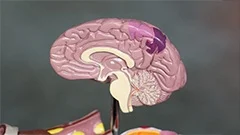Introduction
The excretory system, also known as the urinary system or the kidney system in humans, is a crucial part of animal physiology responsible for maintaining homeostasis and removing waste products from the body. This comprehensive course will delve into the structure, function, regulation, and disorders associated with this intricate system.
An Overview of the Excretory System
The excretory system primarily consists of two kidneys, two ureters, a bladder, and a urethra. In addition to these organs, various accessory structures like the adrenal glands also play vital roles in this system. This overview serves as a foundation for understanding the complexities that lie ahead.
The Kidneys: Filtration Hubs
The kidneys are located on either side of the vertebral column and function as filtration units for the blood circulating through them. They perform the following critical functions:
Glomerular Filtration
Glomerular filtration is the primary mechanism by which waste products, metabolites, and excess water are removed from the bloodstream. This process occurs at specialized filtering sites called glomeruli within each kidney.
Tubular Reabsorption and Secretion
Once filtered, the fluid that leaves the glomerulus is processed further by the tubules in the kidneys. The proximal tubule, loop of Henle, distal tubule, and collecting ducts are responsible for reabsorbing essential nutrients like glucose, amino acids, and water while excreting waste products such as urea and uric acid.
The Ureters: Conduits for Waste Elimination
The ureters serve as conduits for the transportation of urine from each kidney to the bladder. They are muscular tubes lined with mucous membranes that facilitate smooth, unidirectional flow of urine.
The Bladder: Reservoir and Storage Facility
The bladder is a muscular sac situated in the pelvic cavity that functions as a temporary storage facility for urine. It has the capacity to expand and contract depending on the volume of urine it contains, ensuring that excess fluid can be accumulated without causing discomfort or pressure.
The Urethra: Exit Route
The urethra is a narrow tube extending from the bladder to the external environment. It provides an exit pathway for urine and helps maintain proper urinary flow and continence. In male mammals, the urethra passes through the prostate gland; in female mammals, it is located anterior to the vagina.
Accessory Structures: Additional Functions
While not strictly part of the excretory system, certain accessory structures play essential roles in overall kidney function and homeostasis. For instance:
Adrenal Glands
The adrenal glands are located atop each kidney and secrete hormones like aldosterone and adrenaline that help regulate blood pressure, water balance, and the response to stress. They also synthesize small amounts of steroid hormones such as testosterone and estrogen.
Regulation of Excretory System Function
The excretory system is closely regulated by several factors including hormones, nervous input, and feedback mechanisms. A deep understanding of these regulatory aspects is crucial for comprehending the intricacies of this complex system.
Hormonal Regulation
Hormones like vasopressin (antidiuretic hormone) and aldosterone play significant roles in regulating water balance and blood pressure within the body. They act on the kidneys to influence fluid reabsorption or excretion, thereby helping maintain homeostasis.
Nervous Input
The nervous system provides input to the kidneys through both autonomic nerves and higher brain centers. This input helps modulate kidney function in response to changes in the body's physiological state, such as during exercise or stressful situations.
Feedback Mechanisms
Feedback mechanisms are critical for maintaining proper excretory system function. For example, changes in blood pH levels can trigger adjustments in urine acidity, ensuring that the body maintains a stable internal environment.
Disorders of the Excretory System
Several disorders can affect the excretory system, leading to complications such as kidney stones, urinary tract infections, and chronic kidney disease. Understanding these disorders is essential for proper diagnosis, treatment, and prevention strategies.
Kidney Stones
Kidney stones are hard mineral deposits that form within the renal tubules or pelvis. They can cause severe pain, obstruction of urine flow, and potentially lead to more serious complications if not promptly treated.
Urinary Tract Infections (UTIs)
Urinary tract infections occur when pathogenic bacteria enter the urinary system and multiply within the bladder or kidneys. Symptoms may include pain, frequency, urgency, and cloudy or foul-smelling urine. UTIs can be managed effectively through antibiotic therapy.
Chronic Kidney Disease (CKD)
Chronic kidney disease is a progressive condition characterized by the gradual loss of kidney function over time. Common causes include diabetes, hypertension, and glomerulonephritis. CKD can lead to complications such as fluid retention, electrolyte imbalances, and anemia. In severe cases, it may require dialysis or even kidney transplantation.
Conclusion
The excretory system is a vital component of animal physiology, playing essential roles in maintaining homeostasis and eliminating waste products from the body. Through this comprehensive course, we have delved into its structure, function, regulation, and associated disorders, providing a solid foundation for continued study and exploration.
MCQ: Test your knowledge!
Do you think you know everything about this course? Don't fall into the traps, train with MCQs! eBiologie has hundreds of questions to help you master this subject.
These courses might interest you
Create a free account to receive courses, MCQs, and advice to succeed in your studies!
eBiologie offers several eBooks containing MCQ series (5 booklets available free for each subscriber).



